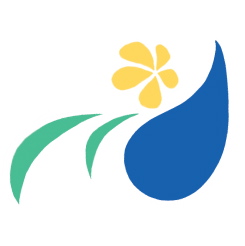The city of Uji, Kyoto is known to be the birth place of Japanese tea. This small clump of trees is an area called “Oh-Fuku-Dani 大福谷” where the first tea leaves were successfully planted way back in 1271. Tea farmers have since moved tea-planting to other areas so now it has cedar trees.
This is the birth place of Nagatani So-en (1680-1778), the man who revolutionized (back in 1738!) Japanese green tea processing into how it is now.
Tea culture runs deep here, as evidenced even by the mailbox, which is shaped like a tea urn!
The city is surrounded by lush, green hills and the Uji River runs through it, making it a perfect setting to grow tea.
This is a field for sencha, tea, grown in full daylight.
Here is how gyokuro and tencha (the leaves used to make matcha) are grown, shaded for about a month before harvest.
Most tea leaves are already machine-picked. However, the highest grade teas are still hand-picked. After picking, the tea leaves are rolled/kneaded, steamed and then dried. They end up in boxes like this.
Here is the lady who vacuum packs our tea for us! Thank you for your hard work! :-)
Tea-tasting and a refresher course in the proper way of preparing matcha!
I also tried a hand in making matcha! The stone mill is cranked counter-clockwise, one revolution per 3 seconds. Too fast and the tea is not milled properly, resulting in a bitter tea; too slow and the powder gets stuck in the grooves of the mill. It takes about 30 minutes to grind enough matcha for one bowl. Modern farms still use the same stone mill with machines doing the turning.
The taste of freshly ground matcha is in a league of its own!
We hope you continue to enjoy Japanese green tea!
